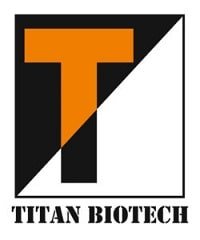OX Bile Extract
- Home
- Pharmaceuticals and Nutraceuticals
- OX Bile Extract
Ox Bile Extract Powder
We Titan Biotech is the leading and best supplier and manufacturer of ox bile extract powder around the world. We are here in this business from last 25 years and make our presence in more than 75 countries.
Ox Bile Extract is utilized to emulsify lipids in food going through the digestive system (intestine) to empower fat digestion and absorption through the intestinal wall. Bile is excreted by the liver and stored in the Gallbladder until needed to assist in the digestion of lipids or fats. Bile salts, which are the active components of the Bile Extract Powder, assist in breaking down cholesterol and other fat components in the intestines. Ox Bile Extract supplement helps to emulsify fats and promotes absorption of fat-soluble vitamins such as Vitamins K, A, D and E.
Request A Quote
How Ox Bile Extract Powder Works?
Ox Bile Extract Powder or Bile is a yellowish brown fluid produced by the liver is used to emulsify lipids in food passing through the (digestive system) intestine to enable fat digestion and absorption through the intestinal wall. Bile salts help in the breakdown of saturated fats that the digestive system has not possessed the capacity to convert into unsaturated fats. The body utilizes these unsaturated fats to produce or manufacture Essential Vitamins and Hormones. Numerous individuals without appropriate Gallbladder function find it supportive supplement to enhance with the best Bile Salts.
A deficiency of bile production or decreased excretion of bile by the Gallbladder can lead to Gallstones. These Gallstones are formed from various combinations of cholesterol, concentrated bile, minerals and pigments.
Ox Bile Extract Powder
Functions
 Contributes to the cholestrol metabolism
Contributes to the cholestrol metabolism Crucial role in dietary lipid digestion & absorption
Crucial role in dietary lipid digestion & absorption Controls & empoers the immune function,liver & gallbladder
Controls & empoers the immune function,liver & gallbladder Acts as signaling molecule outside of gastrointestinal tract
Acts as signaling molecule outside of gastrointestinal tract Accelerate the breakdown of protein by pancreatic proteases
Accelerate the breakdown of protein by pancreatic proteases Direct & indirect antimictrobial effects
Direct & indirect antimictrobial effects Act as versatile signaling molecules
Act as versatile signaling molecules Longer shelf life
Longer shelf life Balanced composition
Balanced composition Safe to consume
Safe to consume
Looking for a Bulk Ox Bile Extract Supplier?
Functions of Ox Bile Extract Powder
O
P10
- Contributes to the cholestrol metabolism
- Crucial role in dietary lipid digestion & absorption
- Controls & empoers the immune function,liver & gallbladder
- Direct & indirect antimictrobial effects
- Acts as signaling molecule outside of gastrointestinal tract
- Act as versatile signaling molecules
- Accelerate the breakdown of protein by pancreatic proteases
- Longer shelf life
- Balanced composition
- Safe to consume
Applications & Benefits of Ox Bile Salt and Extract
- Emulsification of fat soluble Vitamins (A, D, K & E) which improve their absorption.
- Removal of excess cholesterol and fat.
- Prevent Gallstones of Choledochal Cysts.
- Treats many severe liver diseases like Cirrhosis and Hepatitis.
- Treats small intestine diseases like Crohn’s Disease.
- Moderates cholesterol and triglycerides.
- Controls Heart Gastroesophageal Reflux Disease (GERD).
- keep the small intestines free from micro-organisms
- Plays a very important role in making the stool soft by promoting the addition of water into the stool.
- Serves as a carry of toxins. The liver filters the toxins and dumps them into the bile. Bile then carries the toxins to the intestines where they are absorbed by dietary fiber and excreted.
